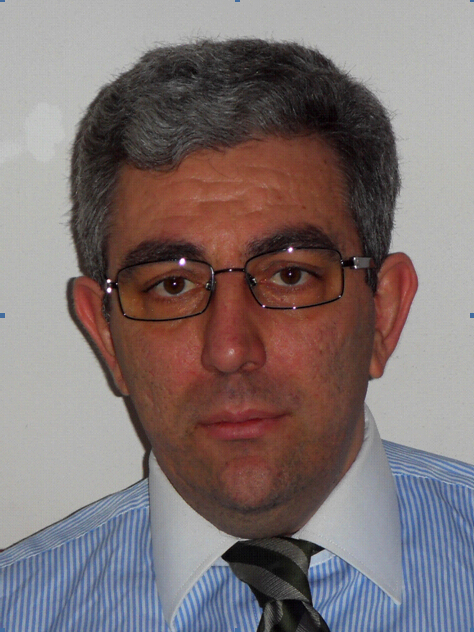ISSN: 2313-5611; Frequency: Annual, Instant published; The first Issue: March, 2015; Full Open Access; Publishing fee
SCOPE: IJNR publishes original research, reviews and other material related to Autoimmune Diseases of the Nervous System, Autonomic Nervous System Diseases, Central Nervous System Diseases, Chronobiology Disorders, Cranial Nerve Diseases, Demyelinating Diseases, Nervous System Malformations, Nervous System Neoplasms, Neurocutaneous Syndromes, Neurodegenerative Diseases, Neurologic Manifestations, Neuromuscular Diseases, Neurotoxicity Syndromes, Restless Legs Syndrome, Sleep Disorders, Trauma and Nervous System.
MISSION: Rapid exchange of scientific information between clinicians and scientists worldwide, seeks to publish papers reporting original clinical and scientific research which are of a high standard and which contribute to the advancement of knowledge in the field of neurology.
EDITOR-IN-CHIEF

Salvatore Chirumbolo, Ph.D. is a Clinical Biochemist, Senjor Researcher at the Department of Medicine of the University of Verona-Italy. He was currently Head of the Laboratory of Physiopathology of Obesity at the Laboratory of Medical Research of the local University (LURM).
MoreCOVER IMAGE

Figure 1 Chemical structure of 2,3,5,4’-tetrahydroxystilbene-2-O-β-D-glucoside. Current strategies for Alzheimer’s disease (AD) treatment are mainly symptomatic; development of disease-modifying therapies is urgently needed. Polygonum Multiflorum has been used in Traditional Chinese Medicine for long history in treatment of dementia.
MoreFeatured
 AIM: Evidence is increasing that individuals with autism spectrum disorder have impairments in their ability to integrate information across different sensory modalities. To further explore this issue, event-related potentials were used to compare auditory and somatosensory processing as well as multisensory auditory-somatosensory integration for five boys ages 6 - 12 years diagnosed with autism spectrum disorder and five typically developing age- and gender-matched controls. MATERIALS AND METHODS: Event related potentials were recorded from thirty-two scalp electrodes while participants watched a silent cartoon and three types of sensory stimulation were delivered: bilateral auditory clicks, vibro-tactile stimulation of the right palm, and both simultaneously. More
AIM: Evidence is increasing that individuals with autism spectrum disorder have impairments in their ability to integrate information across different sensory modalities. To further explore this issue, event-related potentials were used to compare auditory and somatosensory processing as well as multisensory auditory-somatosensory integration for five boys ages 6 - 12 years diagnosed with autism spectrum disorder and five typically developing age- and gender-matched controls. MATERIALS AND METHODS: Event related potentials were recorded from thirty-two scalp electrodes while participants watched a silent cartoon and three types of sensory stimulation were delivered: bilateral auditory clicks, vibro-tactile stimulation of the right palm, and both simultaneously. More
Current
EXCELLENT ARTICLES
Table of Contents
EDITORIAL
| Current Challenges to Clinical Assessment of Spasticity |
PDF
HTML
|
|
Chetan Purushottam Phadke, Farooq Ismail, Chris Boulias |
1-4 |
REVIEW
| Polyphenol Ellagic Acid – Targeting To Brain: A Hidden Treasure |
PDF
HTML
|
|
Ramandeep Kaur, Sidharth Mehan, Deepa Khanna, Sanjeev Kalra |
141-152 |
| Ketogenic diet as a treatment option for different CNS diseases |
PDF
HTML
|
|
Sviatlana V. Hrynevich, Tatyana V. Waseem, Sergei v Fedorovich |
285-290 |
ORIGINAL ARTICLE
| Impact of Seasonal Variations on Spasticity Assessment and Treatment |
PDF
HTML
|
|
Martha Miller, Lisa Martin, Farooq Ismail, Chris Boulias, Lisa Lyons, Chetan Purushottam Phadke |
83-87 |
Articles
CASE REPORT
| Painful Small Fiber Neuropathy in Sarcoidosis: A Report of Two Patients |
PDF
HTML
|
|
David Steven Younger, Kurenai Tanji, Cynthia Liu, Jennifer Zeng, Roy A. Raad, Kyra F. Doumlele, Seth Younger |
14-17 |
 Salvatore Chirumbolo, Ph.D. is a Clinical Biochemist, Senjor Researcher at the Department of Medicine of the University of Verona-Italy. He was currently Head of the Laboratory of Physiopathology of Obesity at the Laboratory of Medical Research of the local University (LURM).More
Salvatore Chirumbolo, Ph.D. is a Clinical Biochemist, Senjor Researcher at the Department of Medicine of the University of Verona-Italy. He was currently Head of the Laboratory of Physiopathology of Obesity at the Laboratory of Medical Research of the local University (LURM).More Figure 1 Chemical structure of 2,3,5,4’-tetrahydroxystilbene-2-O-β-D-glucoside. Current strategies for Alzheimer’s disease (AD) treatment are mainly symptomatic; development of disease-modifying therapies is urgently needed. Polygonum Multiflorum has been used in Traditional Chinese Medicine for long history in treatment of dementia. More
Figure 1 Chemical structure of 2,3,5,4’-tetrahydroxystilbene-2-O-β-D-glucoside. Current strategies for Alzheimer’s disease (AD) treatment are mainly symptomatic; development of disease-modifying therapies is urgently needed. Polygonum Multiflorum has been used in Traditional Chinese Medicine for long history in treatment of dementia. More AIM: Evidence is increasing that individuals with autism spectrum disorder have impairments in their ability to integrate information across different sensory modalities. To further explore this issue, event-related potentials were used to compare auditory and somatosensory processing as well as multisensory auditory-somatosensory integration for five boys ages 6 - 12 years diagnosed with autism spectrum disorder and five typically developing age- and gender-matched controls. MATERIALS AND METHODS: Event related potentials were recorded from thirty-two scalp electrodes while participants watched a silent cartoon and three types of sensory stimulation were delivered: bilateral auditory clicks, vibro-tactile stimulation of the right palm, and both simultaneously. More
AIM: Evidence is increasing that individuals with autism spectrum disorder have impairments in their ability to integrate information across different sensory modalities. To further explore this issue, event-related potentials were used to compare auditory and somatosensory processing as well as multisensory auditory-somatosensory integration for five boys ages 6 - 12 years diagnosed with autism spectrum disorder and five typically developing age- and gender-matched controls. MATERIALS AND METHODS: Event related potentials were recorded from thirty-two scalp electrodes while participants watched a silent cartoon and three types of sensory stimulation were delivered: bilateral auditory clicks, vibro-tactile stimulation of the right palm, and both simultaneously. More 


